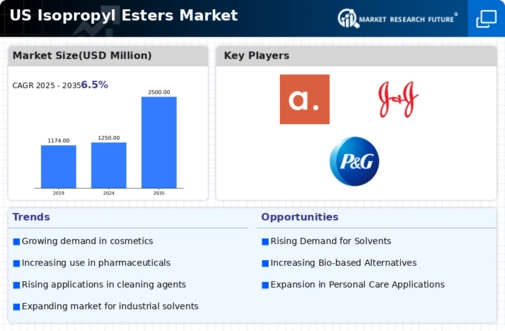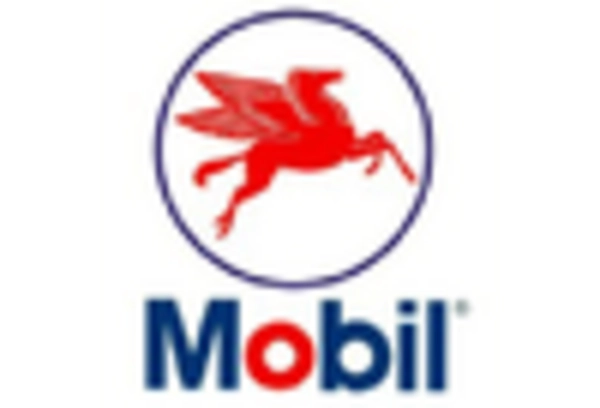Expansion of Industrial Applications
The isopropyl esters market is poised for growth due to the expansion of industrial applications, particularly in sectors such as coatings, adhesives, and cleaning products. These esters serve as effective solvents and additives, enhancing the performance of various formulations. The industrial sector in the US is projected to grow at a CAGR of around 3% through 2026, which may lead to increased consumption of isopropyl esters. This trend indicates a promising opportunity for manufacturers to diversify their product lines and cater to the specific needs of industrial clients, thereby driving growth in the isopropyl esters market.
Growth in Pharmaceutical Applications
The pharmaceutical sector is a critical driver for the isopropyl esters market, as these compounds are often employed as solvents and excipients in drug formulations. The increasing focus on developing innovative drug delivery systems is likely to enhance the demand for isopropyl esters. In the US, the pharmaceutical market is expected to surpass $600 billion by 2025, with a growing emphasis on the use of isopropyl esters in various therapeutic applications. This growth suggests that the isopropyl esters market will benefit from the expanding pharmaceutical landscape, as manufacturers seek to optimize formulations for better patient outcomes.
Technological Innovations in Synthesis
Technological advancements in the synthesis of isopropyl esters are likely to play a pivotal role in shaping the market landscape. Innovations in production techniques can lead to more efficient and cost-effective manufacturing processes, which may enhance the competitiveness of isopropyl esters in various applications. As the US market continues to evolve, manufacturers that invest in research and development to improve synthesis methods could gain a significant advantage. This focus on innovation suggests that the isopropyl esters market may experience increased supply and potentially lower prices, benefiting end-users across multiple sectors.
Rising Demand in Personal Care Products
The isopropyl esters market is experiencing a notable increase in demand driven by the personal care sector. These esters are widely utilized in cosmetics and skincare formulations due to their excellent emollient properties. As consumers increasingly seek products that offer both efficacy and safety, the preference for formulations containing isopropyl esters is likely to grow. The personal care industry in the US is projected to reach approximately $80 billion by 2026, with a significant portion attributed to the incorporation of isopropyl esters. This trend indicates a robust opportunity for manufacturers within the isopropyl esters market to cater to evolving consumer preferences for high-quality, safe, and effective personal care products.
Regulatory Support for Eco-Friendly Chemicals
Regulatory frameworks in the US are increasingly favoring the use of eco-friendly chemicals, which is beneficial for the isopropyl esters market. Agencies such as the Environmental Protection Agency (EPA) are promoting the adoption of sustainable chemical practices. This regulatory support encourages manufacturers to shift towards greener alternatives, including isopropyl esters, which are derived from renewable resources. As a result, the market is likely to witness a surge in demand as companies align their product offerings with regulatory expectations. The potential for growth in the isopropyl esters market is thus closely tied to the evolving regulatory landscape that prioritizes environmental sustainability.

















Leave a Comment